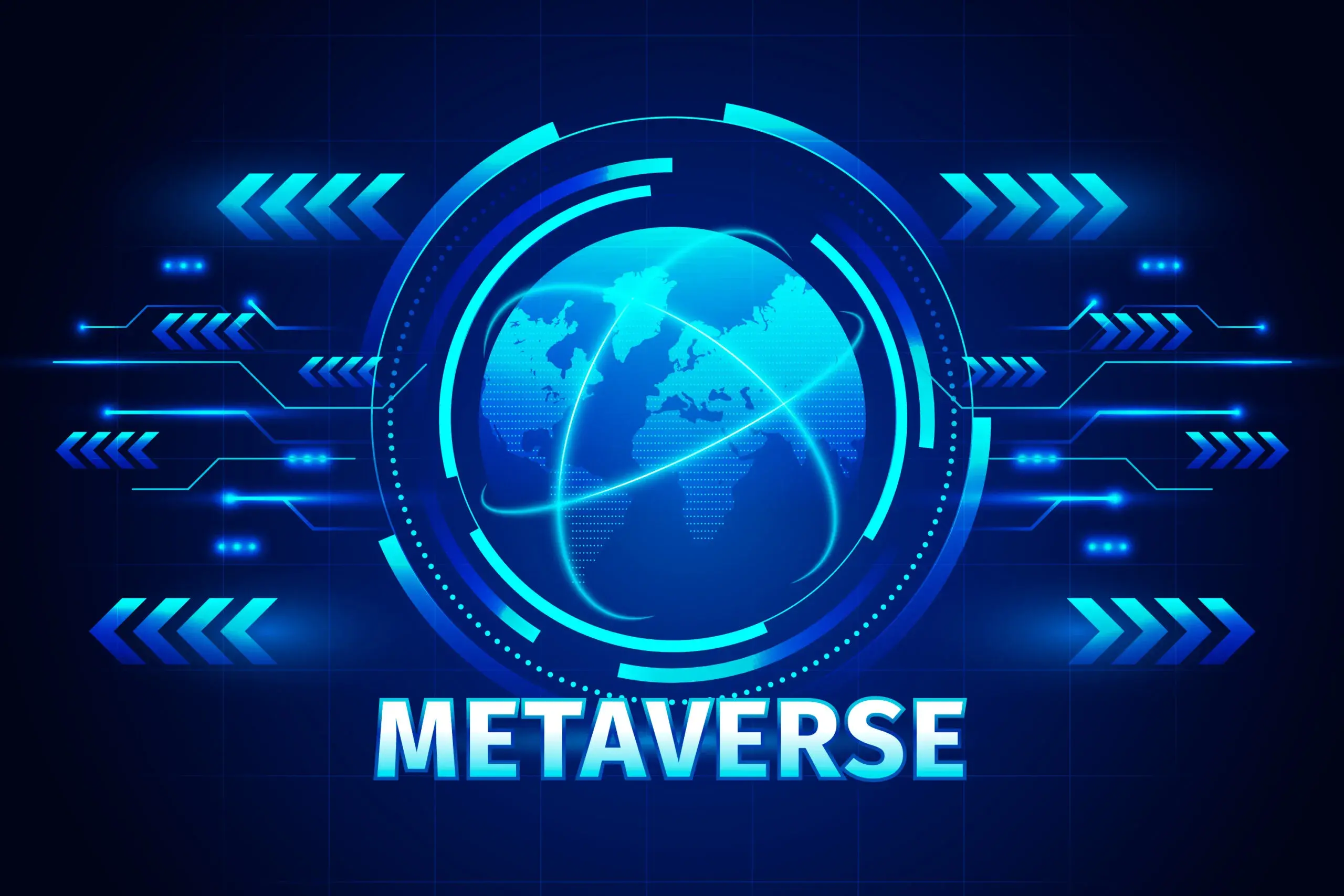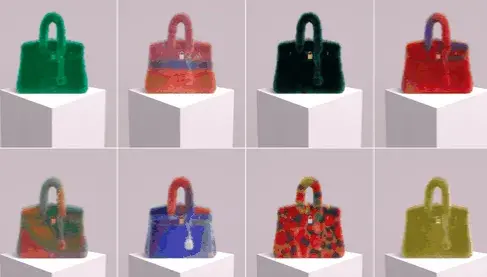By Arpit Kalra and Sulagna Goswami
An artist named Mason Rothschild made headlines when he openly revealed in his Instagram account that he has received a Cease & Desist Letter from the fashion Mogul Hermes claiming that his METABIRKIN NFTs are a mere infringement of their federally registered trademarks and designs. Rothschild confidently proclaimed that his NFTs are shielded from Hermès’s trademark claims by “the First Amendment”, which gives him every right to create art based on his interpretations of the world around him
Hermes v. Rothschild is one of the first cases which deals with IP rights of proprietors in the Metaverse and discusses the fine line between an art being creativity of an artist or a recipe for confusion and dilution. At one side Mason Rothschild fought for his rights as an artist and out rightly sought for protection under the First Amendment, on the other side Hermes brought out real time instances of confusion amongst public of assumptions of association and collaboration.
On February 08, 2023, the Jury came out with its most awaited verdict where they saw through Rothschild’s ulterior motives of gaining popularity and profiting commercially through Hermes’ goodwill and well established customer base. The Jury declared Rothschild to be liable on all three counts, trademark infringement, dilution, and cybersquatting, and that he shall not shielded by First Amendment protection.
Brief Background
The Defendant first introduced ‘The Baby Birkin’ as a single NFT consisting of an animation of Hermes’ BIRKIN handbag which featured a 40-week old fetus on top of a transparent version of a BRIKIN. It was initially sold for $23,500 and later resold for $47,000. To many, including the Plaintiff it appeared to be a one-time bizarre creation and did not pay much heed to the same. But the skyrocketing success provoked the Defendant to come up with METABIRKINS which are a line of 100 digital collectibles which feature Hermes’ BIRKIN handbag design covered in fur as shown below:
Post the receipt of the cease and desist from Hermes in December 2021, the Defendant did add a disclaimer on their website stating that they are not affiliated, associated, authorized, endorsed by or in any way officially connected to the HERMES and further mentioned their official Hermes website. However the same was nowhere to be seen on their social media handles on their listing on Rarible or Opensea.
Even though Opensea had removed/taken down the Defendant’s listings and denied access to their platform, METABIRKINS were available for sale on other platforms such as Rarible, LooksRare and Zora. Further, as of January 06, 2022, METABIRKINS NFTs have surpassed the total sales of $1.1million.
The Defendants, despite of the receipt of letters from Hermes, overlooked the same and continued to actively advertise their products on Discord and came up with trending hashtags #NotYourMothersBirkin or with challenges named “Build-A-Metabirkin” to continue to keep their NFTs relevant in the market.
Hence the present suit was filed by Hermes on January 14, 2022 before the United States District Court for the Southern District of New York
Contentions made the by the Plaintiff in the Complaint:
- Defendant’s METABIRKINS is a rip off Hermes’ BIRKIN where they have simply added a generic prefix ‘META’ which in general refers to the virtual world.
- The Defendant in the recent interview with Yahoo finance has openly disclosed that, in an attempt to replicate the physical world’s success of the BIRKIN bag in the metaverse, he came up with a collection of NFTs using the METABIRKINS trademark.
- The defendant is actively operating social media handles under the name METABIRKINS, has registered the domain metabirkins.com and aims to replicate the experience of a BIRKIN handbag in the metaverse.
- The Defendant’s NFT METABIRKINS consists of blurry images of the trade dress of the BIRKIN bag and is evidently stealing the goodwill of Hermes’ to create and sell his own line of products under the garb of ‘creativity’ of an artist.
- The use of the distinctive design of the BIRKIN handbag in conjunction with the MEABRIKINS trademark is a recipe for confusion and dilution. The consumers in the metaverse are made to believe that NFTs featuring such famous brand name are in fact affiliated/backed by with such brands.
- Alternatively, the Plaintiff’s reputation may face a downfall and may not be thought so highly by its customers thinking that why such a famous brand is allowing such affiliation and dilution of their brand name.
- The Defendant’s trademark METABIRKINS has given birth to other such creators who have supposedly counterfeited the defendant’s collection of METABIRKINS NFTs all of which has even more diluted the Plaintiff’s brand BIRKIN.
- There have been instances of confusion where the eminent fashion magazines such as Elle and L’officiel and the New Yok Post have all mistakenly reported that the METABIRKIN NFTs is a byproduct of Hermes’ partnership with Rothschild.
- Unless intervened by the court, the Defendant will continue to sell NFTs under the name METABIRKINS with will preempt Hermes to offer products and services under their brand name BIRKIN in the virtual world in future.
Defense as filed on February 09, 2022
- Mason Rothschild is an artist, where METABRIKINS is a series of digital artwork which is a unique, fanciful interpretation of a Birkin Bag and does not mislead regarding the source or content.
- The METABIRKINS are made with pixels which depict a bag covered with fur and exist only online in comparison to the Hermes Birkin Bag which are ‘ultra-expensive leather bags’ and made from tanned hides of slaughtered animals.
- The Defendant, from the judgement of Rogers v. Ginger quoted that “where the defendant’s product is artistic or expressive, the Lanham Act must be interpreted narrowly in order to avoid suppressing protected speech under the First Amendment”. Accordingly, his METABIRKINS, being a mere artistic rendering of the Hermes Birkin bag should be exempted from the Lanham Act.
- Further the Defendant also quoted that “In general the [Lanham] Act should be construed to apply to artistic works only where the public interest in avoiding consumer confusion outweighs the public interest in free expression” where in present case the use of the METABRIKINS, as the name of his art project is to be artistically relevant and not to mislead the public.
- The Defendant has sought for support from the rights bestowed to him in the First Amendment i.e. the freedom of expression and his right to choose the topics he wishes to address and to depict objects that exist in the world as he sees them.
- METABIRKINS is the Defendant’s way of expressing his opinions on the fashion industry’s animal currently and the movement to find leather alternatives.
- METABIRKINS is nothing but an artistic reflection which shows luxury with no function but communication and calls into question what it is that luxury lovers actually pay for.
- The Defendant, from the judgement Louis Vuitton Malletier, S.A. v. My Other quoted that “Where trademarks come to carry so much communicative freight, allowing the trademark holder to restrict their use implicates our collective interest in free and open communication”.
- The Lanham Act is only to be applied to an expressive work which is explicitly misleading. However a slight risk of using a well-known name/brand which might implicit endorsement is outweighed by the danger of restricting artistic expression and therefore the Lanham Act should not be applied in such circumstances.
- Mere use of the mark BIRKIN as a part of METABIRKIN is not a clear cut case of misleadingness.
- The use of a domain name that is the title of the Defendant’s art project cannot be termed as bad faith as that title is artistically relevant and not explicitly misleading.
Jury Determination and not Summary Judgment
The court applied the two-prong Rogers test, which provides that an artistic work is protected by the First Amendment from a trademark infringement claim unless the plaintiff can show that either (1) the use of its trademark in an expressive work was not artistically relevant to the underlying work or (2) the trademark is used to “explicitly mislead” the public as to the source or content of the underlying work.
As to the first prong, whether a defendant’s use of a plaintiff’s trademark is artistically relevant to its work is “a mixed question of law and fact, is a matter best decided in jury determination and accordingly the request for summary judgment was dismissed vide its order dated May 18, 2022.
The court declined to engage in an assessment of the Polaroid factors ( the strength of the plaintiff’s mark; the degree of similarity between the two marks; the proximity of the products; the likelihood that the owner will bridge the gap; evidence of actual confusion; defendant’s good faith in adopting the mark; the quality of defendant’s product; and the sophistication of the consumers will likely cause confusion with plaintiff’s), which courts look to when assessing the second prong of the Rogers test, whether the artistic work is “explicitly misleading.” Hermès presented survey evidence of 18.7% net confusion among potential NFT consumers as to Hermès’s association with the “MetaBirkins” project—a percentage which courts generally consider probative of confusion in the marketplace. Hermès also pointed to evidence that social media users and the media were confused as to its role in the project.
However, Rothschild disputed the survey methods employed by Hermès and argued that social media posts cannot show actual confusion. But the court found that these issues, and all others related to Hermès’s other claims against Rothschild, should be left for the jury to decide.
Analysis
The entire case boiled down to the very question if the Defendant’s METABIRKINS is misleading enough to prompt the general public to believe any association or collaboration with the Hermes.
The instances of confusion as evidenced by the articles posted on eminent fashion magazine was a clear cut indication of misunderstanding of such collaboration between Rothschild and Hermes.
Further the self-incriminating text messages of Rothschild that he wanted to “create the same exclusivity and demand for the famous handbag,” and was “sitting on a goldmine” was suggestive of the fact he was riding on Hermes’ brand name and goodwill to make his venture profitable under the garb of art and expression.
Such unequivocal evidence convinced the Jury that the Defendant’s METABRIKINS was not only to confuse potential consumers but was intentionally designed to mislead potential consumers into believing that Hermès was associated with their NFT’s project.
The jury found that Rothchild’s use of the bag’s likenesses did not constitute a protected form of speech under the first amendment and believed that Rothschild launched the MetaBirkins NFTs as a “commercial venture,” more than an art project.
Accordingly, the jury awarded Hermès $133,000 in total damages for trademark infringement and cybersquatting, comprised of $110,000 for Rothschild’s profits and resale commissions and $23,000 for cybersquatting.
The jury was not hindered by the fact that NFTs were the medium at issue, instead, the jury seemed to find the existing trademark laws to be sufficiently elastic to protect brand owners’ rights as to NFTs.
This article was first published on Bar & Bench, here
Related Posts
Metaverse: The Next Great Frontier to be Explored by Businesses and its Development in India



